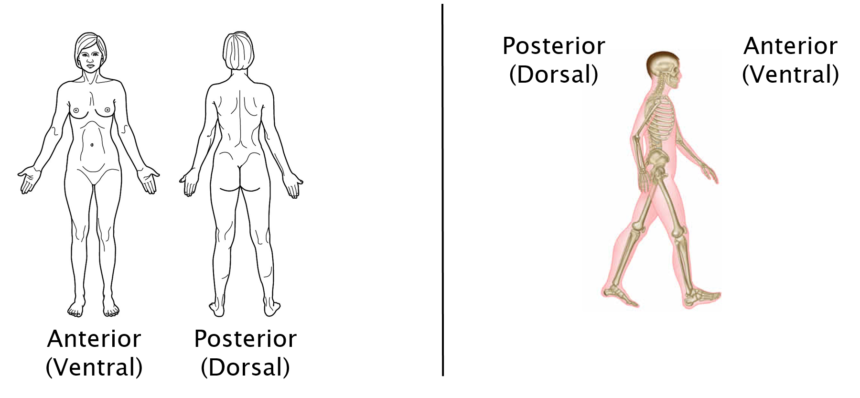We’re going to talk about the directional terms anterior and posterior.
In this article, the following frequently asked questions will be answered:
- What are the definitions for anterior and posterior
- what ways are they used in anatomy
- What are the definitions for anterior and posterior and what ways are they used in anatomy
So first of all, the word
Anterior or ventral means towards the front
Posterior or dorsal means towards the back
Even though ventral and dorsal are terms that have a different meaning in embryology, in anatomy they’re synonymous with anterior and ventral, posterior and dorsal.
So let’s practice an anatomical position. The hand points Anteriorly. In other words, the hand points towards the front. The sternum is blank to the vertebral column. Well, the sternum is in front of the vertebral column, so the sternum is anterior. The vertebral column is blank to the sternum. Well it’s behind. So the vertebral column is posterior to the sternum. How about this.
Anterior and Posterior
Identify the most likely name for the following muscle.
- latissimus dorsi.
- Latissimus lateralis
- latissimus medialli
- latissimus ventri
The answer latissimus dorsi. The term dorsal means dorsal or on the back and latissimus is a really broad muscle Here’s a cross-section of the L1 spinal cord level that is called the dorsal horn of the grey matter.
What is this one called based upon the dorsal horn? That’s the horn in the back. This one is the ventral horn, the one towards the front. They’re also called the posterior horn and anterior horn. How about this step dissection of the neck on the right side, where that muscle is called the middle scalene. And this muscle is called the anterior scalene. Wikipedia
Read Also..
And what do you think that one is called? The posterior scalene muscle.
Now identify the letter on this axial CT that indicates the posterior region of this patient. Well, let’s look for something that makes me makes a smile. That’s a vertebra, the vertebral column that makes me smile. Because if that’s the vertebral column, it’s on the posterior region of this patient, which makes D the most posterior region of this patient. And that are the terms anterior and posterior. In a nutshell.


